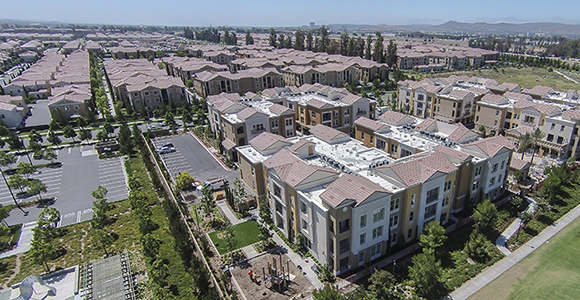
(Photo Credit: ASCEOC)
Orange County’s lowest income renters spend more than 80 percent of their income on rent. Adjusted for housing costs, that brings the poverty rate to more than 20 percent of the population. That’s according a report issued last month by the California Housing Partnership Corporation (CHPC). To bring the poverty rate down, the report says the county needs to add more than 101,000 units of affordable housing units.
This puts a strain on many of the county’s low-wage workers, who need to live near their workplaces said Cesar Covarrubias, executive director of the Kennedy Commission, which partnered with CHPC on the report.
“There is a perception out there that folks just move to the Inland Empire, to Riverside and San Bernardino, because rents are more affordable out there,” said Covarrubias. “They work two full-time minimum wage jobs. And so for them, it makes no sense to live out of the county, where they would have to commute.”
But, as the report shows, rental housing in Orange County is expensive. Low-income residents have to make 3.7 times the state minimum wage to cover the average monthly rent of $1,903 and that leaves little for other expenses such as food, transportation, health care and other costs.
One of the local recommendations put forward in the report by both the CHPC and the Kennedy Commission calls for the creation of Affordable Housing Land Trusts. One of the cities ahead of the curve is Irvine, home to the Irvine Community Land Trust. The city started investigating the possibility of land trusts when it realized it was losing affordable housing inventory as deed restrictions imposed on affordable units in the 1970s and '80s were expiring.
“Over a period of time, we lost a significant amount of units and the city wanted to know what other options existed to extend the term of affordability,” said Mark Asturias, executive director of the Irvine Community Land Trust and housing manager for the City of Irvine. “We landed on the community land trust model, learned more about that model and realized that it met one really significant objective for the city, which was to create a permanent asset that could be set aside for affordable housing to be operated by a non-profit that would be supporting the city.”
The trust acquires land through direct land donations or in-lieu fees from developers who cannot satisfy the city’s inclusionary requirement that 15 percent of all new units be affordable to low- and very low-income households. Land is also acquired through community development block grant funds, HOME Investment Partnership Funds, private donations and acquisition loans from the banks, community development financial institutions and others. Those who qualify can either rent or buy their homes. Buyers only purchase the house and the land remains with the trust to ensure that the home will be affordable in perpetuity.
In the decade since creating the land trust, 120 affordable units have been built and Asturias projects more than 200 will be built in the next decade. He added that people don’t realize how long it takes to develop and build a property: “Local governments are really bound by the Streamlining Act and they are also bound by CEQA. They are bound by other processes that are just statutory in nature and really, when people complain about local government taking too long to get projects approved, there needs to be an acknowledgement that state laws almost force local governments into that situation.”
Local governments are also still reeling from the loss of state redevelopment funds, which helped finance affordable housing. Orange County alone lost more than $97 million since the 2008-09 fiscal year.
Fast-tracking the regulatory process is one of the goals of the California Economic Summit’s Housing Action Team in an effort to create one million affordable housing units in the next decade. The Action Team is committed to creating policy framework with incentives for builders and local government and exploring ideas for using Enhanced Infrastructure Financing Districts (EIFDs) to achieve housing and environmental goals to access fast track regulatory processes created in recent updates to CEQA.
In addition, a Summit analysis of the governor’s “build by right” housing proposal shows it offers the right framework for addressing this challenge—combining state investment in affordable housing with updates to fiscal, land use, and regulatory policies that stymie all types of housing.
But, Summit team members are stressing streamlined permitting and more funding for affordable housing programs are only two pieces of this puzzle and that more will have to be done to reduce the costs of housing—and to overcome the local obstacles that discourage development.
“Unless the state steps in and addresses legislatively some things that are required and also find a way to help fund the development of affordable housing, we’re always going to find ourselves in a hole,” said Asturias. “And high cost areas will continue to stay high cost areas. And because our state continues to grow and our population continues to grow, it will be exacerbated.”

